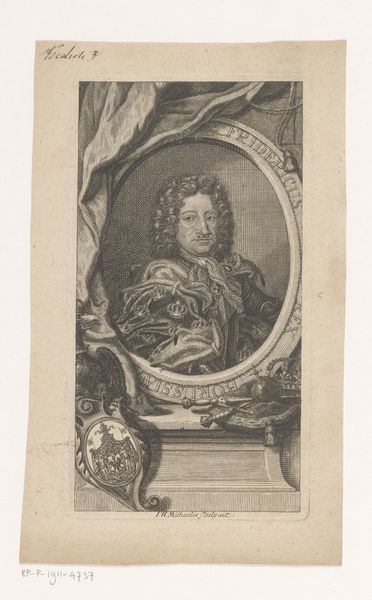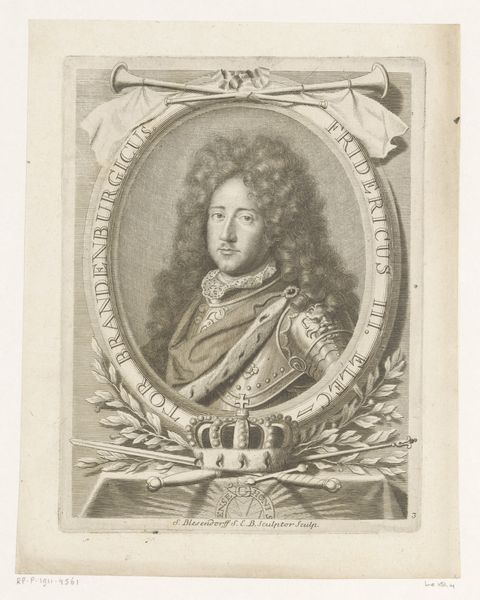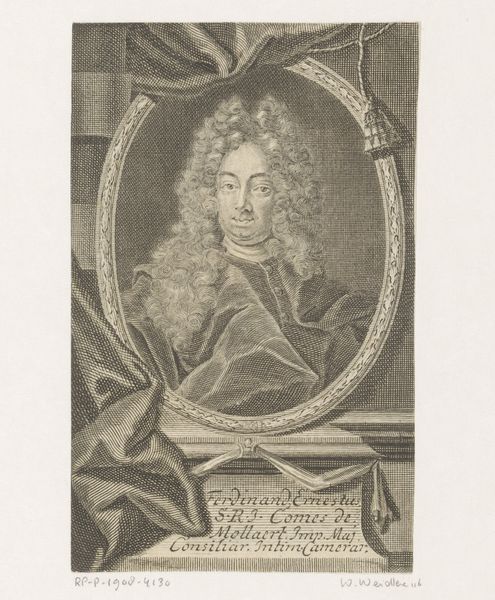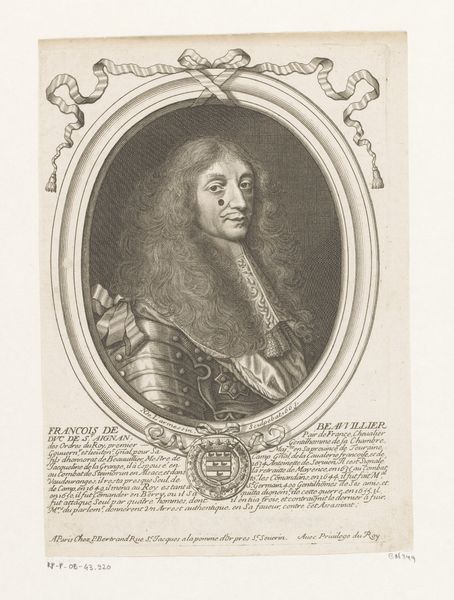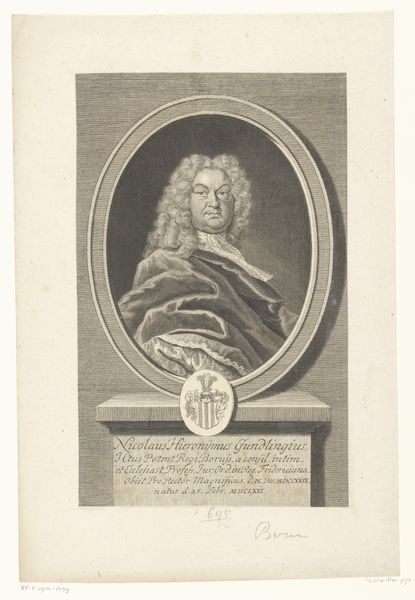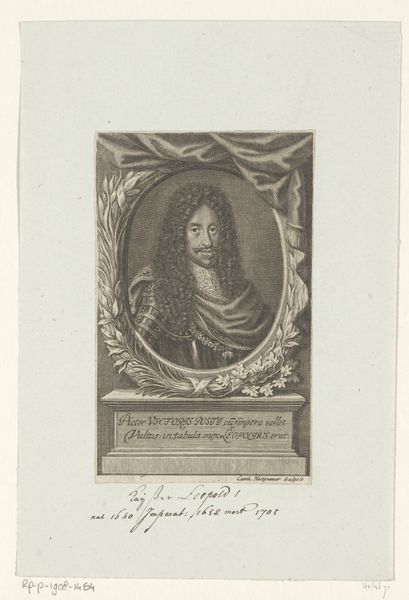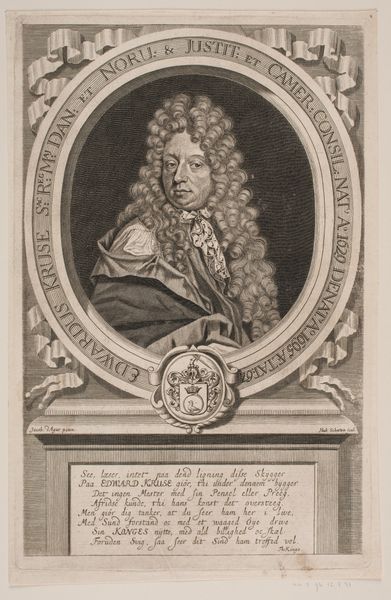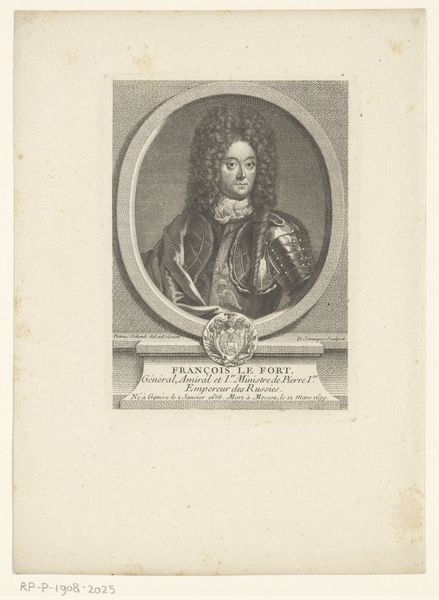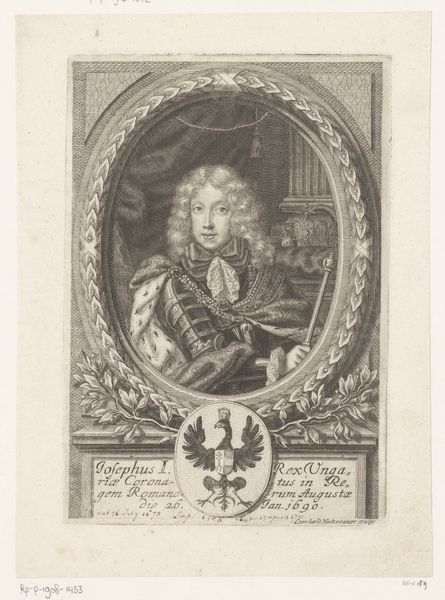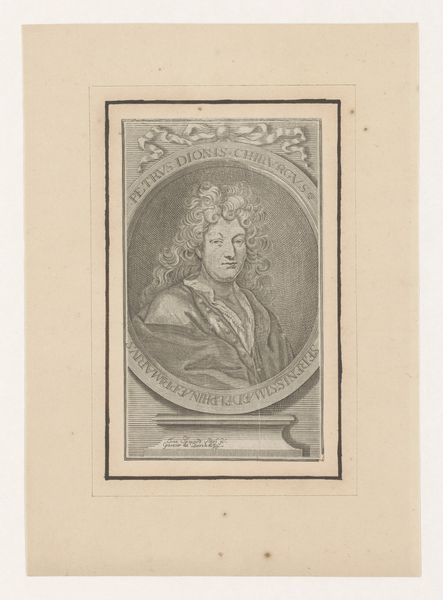
print, metal, engraving
#
portrait
#
baroque
# print
#
metal
#
old engraving style
#
history-painting
#
engraving
Dimensions: height 188 mm, width 148 mm
Copyright: Rijks Museum: Open Domain
Curator: Look at this rather grand portrait, etched in 1698. The Rijksmuseum holds it as a testament to the Baroque period, a metal engraving by Johann Christoph Boecklin titled "Portret van Georg Wilhelm von Braunschweig-Lüneburg." Editor: First impression? A little severe! That wig…it’s like a storm cloud ready to burst. The whole thing feels intensely formal, like he’s daring you to smirk. Is that really armor? Curator: It is, and it speaks volumes! Armor in a portrait is often less about practical warfare and more about representing strength, virtue, and a certain ideal of leadership. The inscription and wreath frame him within concepts of glory and duty. Editor: It’s theatrical! That wig, the inscription... it's all performance. I imagine those portraits had the same effect as a meme in modern times. They said "This person matters!". But really... did he, besides for his royal lineage? Curator: Absolutely. Portraits of this era were integral to crafting and broadcasting one's public image. Von Braunschweig-Lüneburg probably saw this as a vital part of cementing his legacy. And engravings had a wider circulation than painting: multiples to deliver the message, far and wide. Editor: So this wasn't so much about capturing reality, but constructing a kind of political fantasy? He probably sat for it. Like when a model must look heroic. All for appearance's sake! Curator: You have got it right. While appearances are somewhat constructed, we see that these symbolic choices – the armor, the wreath, even the inscription – give us clues as to what this man, and his era, valued and wanted to project. The inscription is the interesting part: “Here lives Wilhelm’s brilliance.” Editor: It makes you wonder who the engraving was for, apart from von Braunschweig-Lüneburg himself. Curator: Think about those who held political power or sought status. They circulated images like this among themselves, reinforcing shared values and power structures, and reminding people in general: "I, this family, we rule this place!". It's visual shorthand. Editor: It sounds exhausting, performing your power for everyone. Still, there's something undeniably fascinating about seeing how these stories are visually encoded and circulated. A curl here, a polished breastplate there. Curator: It truly offers us an intimate and quite interesting peep at the ambitions of rulers! Editor: I walk away thinking that fashion repeats.
Comments
No comments
Be the first to comment and join the conversation on the ultimate creative platform.

